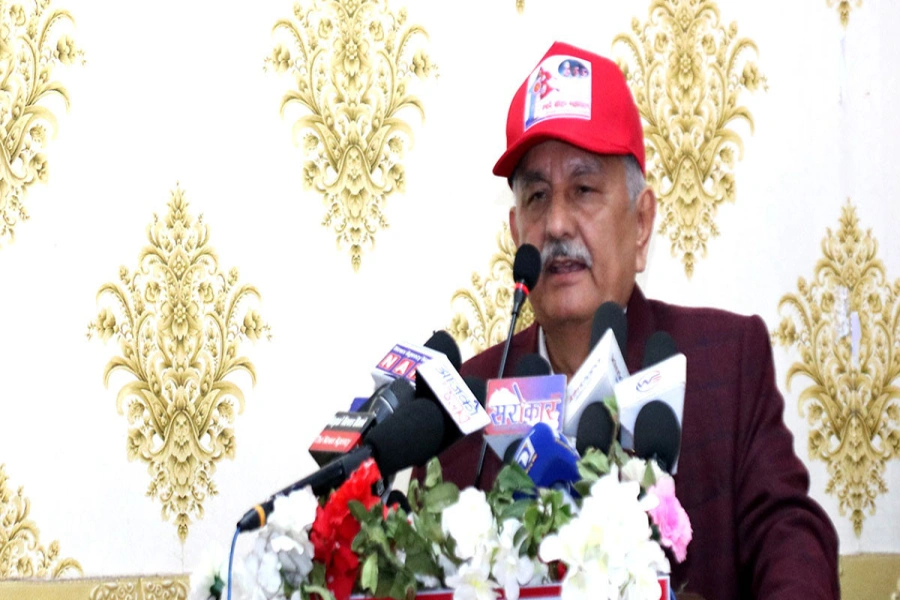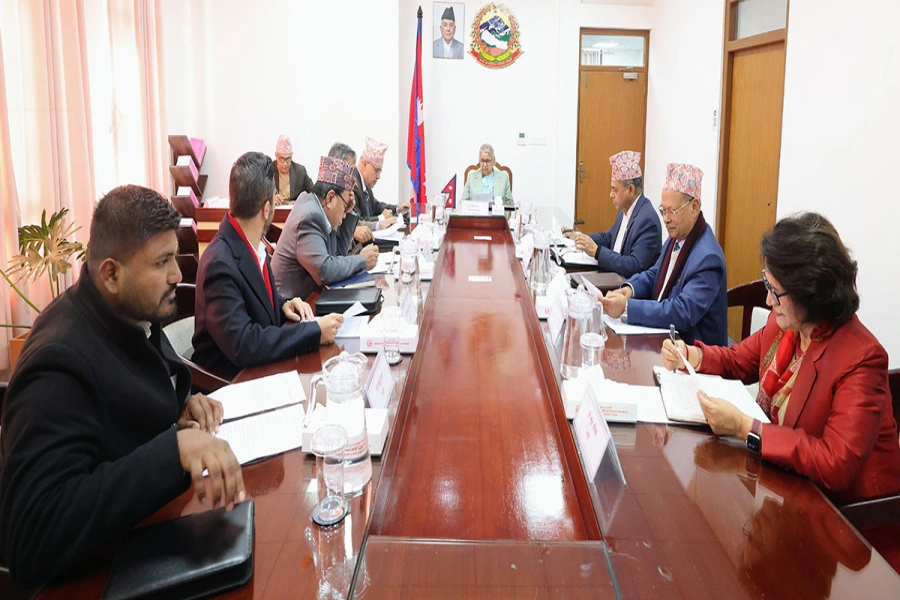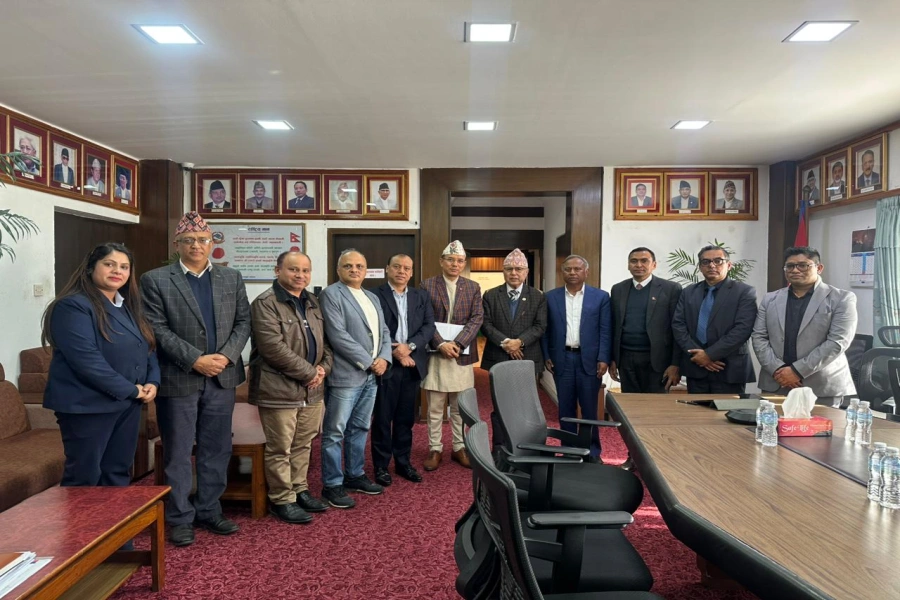As a result of monopolistic practices and systemic inefficiencies, Nepal is confronted with some of the highest logistics costs in the area
Nepal, which is located between two economic powerhouses, India and China, has traditionally relied on its southern neighbor for trade and transit. Additionally, Nepal had a history of engaging in trade with Tibet along its northern border, mostly through the use of a barter and exchange system. However, the dynamics of this commerce were significantly altered as a result of China's successful invasion of Tibet and subsequent incorporation of Tibet into the Tibetan Autonomous Region. Nepal's northern trade options have been restricted as a result of the replacement of the cultural and business norms that historically distinguished Nepal-Tibet commerce with more regulated systems that are under the governance of China. The logistical expenses, documentation, and procedures are still the remaining difficulties that remain unsolved, and there is a need to ensure the ease of doing business with a thorough analytical approach. China is gradually shifting its strategy by providing transit movements from a few ports. However, these issues are still unresolved. Furthermore, for about half of the year, it is difficult to transfer goods due to the tough terrain and challenging weather conditions.
In sharp contrast, Nepal's commercial relationship with India continues to be solid, with similar cultural, social, and economic links serving as the foundation for this partnership. A natural synergy in commerce is made possible by the open border, which is supported by a familiarity with the language, customs, and business practices of the two countries. Cross-border trade thrives on mutual trust and interdependence that has been established over the course of centuries among the communities that are located along the border. This compatibility extends to those communities.
The current situation is that India is responsible for around 65 percent of Nepal's total commerce, while all of Nepal's trade with third countries is conducted through Indian ports. In addition, Nepal is responsible for around 18% of India's commerce, and more than 67% of Nepal's exports are destined for India, highlighting the significance of Nepal as a partner. These numbers provide light on the mutually beneficial nature of their connection, with India serving as Nepal's principal commercial route and playing an important part in the relationship.
Nepal is able to engage in sub-regional trade thanks to India's strategic location, which plays a vital role in this regard. When it comes to connection within South Asia and access to global markets, Nepal is significantly dependent on India. India is a crucial partner in the process of encouraging sub-regional trade and economic integration due to its geographical positioning, infrastructure, and established trade networks.
Initially and foremost, India acts as Nepal's entry point into the rest of the globe. India is able to provide Nepal with essential access to marine trade routes thanks to its extensive coastline and well-developed ports, including Kolkata, Visakhapatnam, and Haldia, among others. There is a connection between Nepalese goods and international markets through these ports, which serve as transit centers for Nepal's trade with third countries.
Moreover, Nepal's connection is further improved by the large road and rail networks that India possesses. The transportation of commodities from Nepal to international markets is facilitated by a number of significant corridors, including the Kolkata-Birgunj railway and road, the Visakhapatnam-Birgunj railway, the Kakarvitta-Kolkata Road, and the Biratnagar-Kolkata railway and Mistry highways, amongst others. The continued investments that India is making in the construction of infrastructure, such as integrated check posts (ICPs) and dedicated freight lanes in Dodhara Chadani, increase India's role as a logistical bridge between Nepal and Indian ports.
Given that Nepal is a landlocked country, it is unavoidable that it will be dependent on the transit routes and ports of India. Despite this, considerable transit issues continue to exist, which drives up the price of logistics, hinders the efficiency of trade, and strains relations between the two countries. In order to address these difficulties, both countries need to refocus their attention and adopt a spirit of cooperation, without allowing geopolitical factors to influence their decision-making.
Difficulties in the Transit of Nepal to India
Disparities in priorities are one of the most significant difficulties that we face. In spite of the fact that India is able to address Nepal's concerns, it frequently delays the resolution of transit issues that are relatively minor but extremely important. Due to the absence of a proactive and compassionate approach, trust has been eroded, and progress has been hampered in the process of resolving Nepal's transit bottlenecks.
As a result of monopolistic practices and systemic inefficiencies, Nepal is confronted with some of the highest logistics costs in the area. Competition is hampered and costs are increased as a result of the mandated use of the Electronic Cargo Tracking System (ECTS), which is managed by a single supplier selected by the Indian government. It is because of this that shipping companies are able to behave in a manner similar to that of monopolies, and Nepalese importers are taking on additional risk and obligation because INCO Terms are not appropriate for a country that is landlocked.
Nepal, India agree to amend transit treaty to facilitate Nepal’...

In addition to introducing needless levels of expense and complexity, the demand that traders employ Indian clearing agencies and shipping lines is a burdensome regulation that further affects them. In addition, the restriction of Nepalese private sector engagement in rail freight operations hinders both the efficiency and competitiveness of the industry.It is extremely difficult for Nepalese logistic service providers to engage in dry ports due to the high level of stakeholder management in India and the huge bids that are submitted.
Two factors that further worsen the situation are the absence of specialized railway lines for cargo that is needed to Nepal and the limited progress that has been made in building inland waterways as a viable option. Even though there have been enhancements made to the road infrastructure, older routes continue to be given preference over freshly created corridors that take up less time.
The lack of cooperation between the national development plans of Nepal and India is another critical issue that has to be brought to light. Infrastructure and logistics systems that are not aligned properly lead to missed chances for improved connection and efficiency. Additionally, the supply chain is susceptible to disruptions caused by terrorism, illegal trading, and other issues because there are no adequate risk management frameworks in place. There is a severe lack of a legal framework that can resolve disputes and hazards inherent in supply chains.
There are additional bureaucratic hurdles that are created by documents and procedures that are not harmonised, which results in delays and inefficiencies. This problem is made worse by the fact that the two countries are unable to communicate effectively with one another, which results in slow answers and insufficient information exchange, which slows down the process of resolving transit concerns.
Inefficiency and a lack of responsibility have also been brought about as a result of the ambiguity that surrounds the functions that logistics service providers play. Another degree of difficulty is added by the restrictions placed on the movement of Nepalese cars in India. Additionally, the high port handling charges that Nepalese businessmen must pay contribute to an increase in the overall cost of doing business.
Due to the lack of combined customs inspections, even infrastructure projects that were constructed with Indian assistance, such as the Integrated Check Posts (ICPs), have not been able to reach their full potential. When it comes to environmental sustainability, transportation routes and logistics centers frequently fail to adhere to contemporary environmental requirements or implement sustainable methods. This is a problem since environmental sustainability is often disregarded.
Ways to Move Forward
In spite of these obstacles, there is a tremendous opportunity to convert the transit connection between Nepal and India into a model of efficiency and mutual benefit. One of the most important initial steps would be to review previous agreements and create a new framework that provides solutions to the gaps that now exist. This framework needs to guarantee equal transit rights and take into account the ever-changing dynamics of trade and logistics.
A major improvement in both efficiency and safety might be achieved by bringing the transit ecosystem between Nepal and India up to date through the implementation of digitalization, machine learning, and the interchange of data in real time. The use of such developments would make it possible to improve risk management and provide tools to swiftly handle interruptions in supply chain operations.
Equally as crucial is the construction of a comprehensive dispute resolution system in order to efficiently manage concerns that are related to urban transportation. In addition, the incorporation of Nepalese private sector actors into rail freight operations and the elimination of monopolistic tactics in logistics services would both encourage competition and result in a reduction in costs.
Providing Nepal with the autonomy to select its chosen ports, routes, and means of transportation, including inland waterways, would enhance the country's ability to compete in the international commercial arena. This may be accomplished with relative ease by implementing a tracking and tracing system that is suitable from an economic standpoint. In addition, accelerating the development of infrastructure, such as road connectivity, dry ports, and inland waterway facilities, would be a significant step in addressing the inefficiencies that are associated with transit.
Due to the fact that Nepal does not have any registered shipping lines, there is a longer rate of dwell time and greater expenses associated with logistics. This is due to the fact that money needs to be paid to liners in Kolkata or other cities in India, and even little errors can result in demurrage and detention charges, which increase around three percent to the cost of carrying out logistics in Nepal.
The situation presents India with a one-of-a-kind opportunity to put Nepal's interests first and to establish trust via concrete actions. If national development goals were aligned and environmentally sustainable practices were implemented, not only would this improve the efficiency of public transportation, but it would also ensure its continued viability in the long run.
The More Far-Reaching Effects of Nepal and India's Commercial Relations
The link between Nepal and India in terms of trade and transit goes beyond only being a matter of commercial transactions. An open border makes it easier for local businesses to thrive, which in turn provides millions of people on both sides with a means of subsistence. Despite the fact that India continues to be Nepal's primary supplier of key commodities such as petroleum products, food grains, and construction materials, major Indian ports such as Kolkata and Visakhapatnam are crucial gateways for Nepal's trade with third-country countries.
In addition, India is a significant market for Nepalese exports, which include handicrafts, tea, cardamom, ginger, vegetable oil, and other products similar to these. The bilateral energy trade agreements have further cemented the relationship between the two countries. India has been acquiring Nepal's surplus hydropower and supplying Nepal with electricity when there is a shortage.
While Indian tourists make up the largest group of visitors to Nepal, they also make a substantial contribution to the country's tourism industry. Indian banks and financial institutions play a key role in enabling commerce and investment in Nepal. In addition, the remittances that Nepalese workers in India send back to Nepal are a significant contributor to the strengthening of Nepal's economy.
Through the provision of transit connectivity, India is a significant contributor to the enhancement of subregional commerce.
By virtue of its central location within South Asia, India is not only able to facilitate bilateral commerce, but it also plays a significant role in the promotion of sub-regional trade initiatives such as BBIN (which stands for Bangladesh, Bhutan, India, and Nepal). The purpose of these projects is to improve connectivity, transit, and cross-border trade. Nepal will profit from these initiatives since they will provide alternate routes and access to nations that are on its border. For instance, Nepal is able to engage in trade with Bangladesh and Bhutan through India, which enables greater economic integration within the subregion. This can be accomplished through the use of road and rail transportation.
The energy cooperation between India and Nepal further emphasizes the strategic significance of the relationship. It highlights India's role in ensuring energy security within the region by allowing Nepal to link to Bangladesh through India.
India's strategic location, along with its infrastructure and policy frameworks, makes it a linchpin for Nepal's sub-regional commerce by supporting economic resilience and growth. In essence, India is a catalyst for Nepal's economic growth and resilience.
Conclusion
It is imperative that the two neighbors prioritize collaboration, trust, and innovation as they go forward in their relationship. Nepal and India have the potential to turn existing difficulties into opportunities if they work together to find solutions to transportation problems and cultivate a spirit of collaboration.
Not only is a seamless transit system essential for Nepal's economic goals, but it also serves India's interest in fostering regional stability and economic development through increased subregional commerce. An integrated transit system is essential for Nepal's economic goals. As we stand at this crucial crossroads, Nepal and India have the opportunity to reinvent their transit partnership in a way that will benefit both parties.
The creation of a seamless transit system that may serve as a benchmark for regional collaboration is something that can be accomplished by resolving chronic issues, updating frameworks, and cultivating a spirit of cooperation to achieve this goal.
It is essential for Nepal to accomplish this in order to realize its economic goals and lessen its reliance on external sources, given that it is a landlocked nation. As far as India is concerned, providing assistance to Nepal is in line with its goals of promoting sub-regional commerce and ensuring the stability of the region. Together, the two countries have the potential to turn bottlenecks in the transportation system into passageways leading to shared wealth, spurring growth and integration throughout South Asia.





































